The Galápagos Islands archipelago is one of the most interesting places on Earth. The remote group of islands is home to an impressive number of endemic species that occupy the surrounding air, land, and seas, and the volcanic landscapes are visually stunning.
In this post, we’ll look at a Galápagos Islands Map (below) and learn about each of the islands in this incredible part of the world.
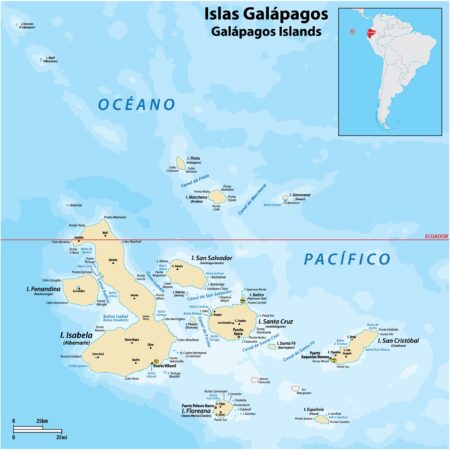
Baltra (South Seymour) Island
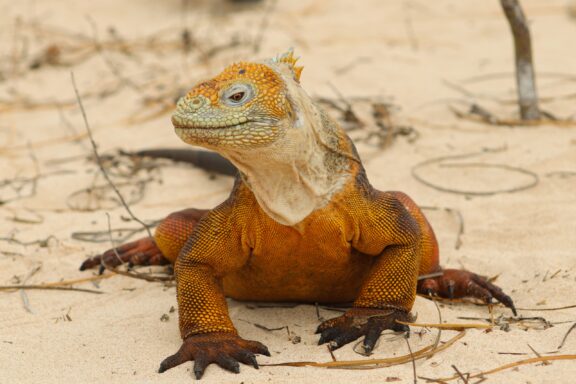
Baltra Island, also known as South Seymour, is located near the center of the Galápagos Islands. Although it is smaller than several of the surrounding islands, Baltra serves as an important transportation hub. The island also functions as an official Ecuadorian military base.
It’s home to one of two airports connecting the islands to mainland Ecuador, and its proximity to Santa Cruz, the most populous island in the archipelago, makes it the entry point for most visitors.
Bartolomé Island
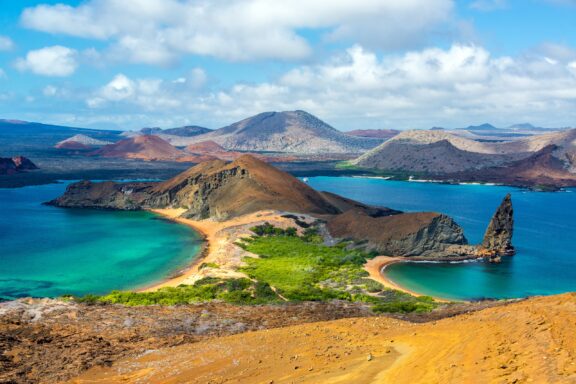
Bartolomé Island and Sulivan Bay on neighboring Santiago Island are both named after Sir Bartholomew James Sulivan, a lifelong friend of Charles Darwin. This island is well-known for its otherworldly landscape and beaches, but it’s also home to some amazing wildlife, such as green sea turtles and Galápagos penguins, which are the only penguins to live north of the equator.
Pinnacle Rock is a popular landmark on this island, and there is a volcanic cone that is easy to climb and offers spectacular views of the other islands.
Darwin Island
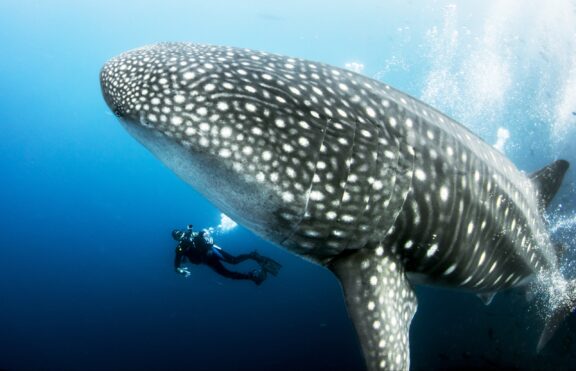
Darwin Island is one of the most remote and northernmost islands in the Galápagos archipelago. Named in honor of the renowned scientist Charles Darwin, this volcanic island is perhaps best known for its incredible diving opportunities.
The island is not open to land visits, but divers from around the globe travel to these remote waters for the chance to dive with massive schools of fish, hammerhead sharks, whale sharks, and a number of other fascinating species.
Española (Hood) Island
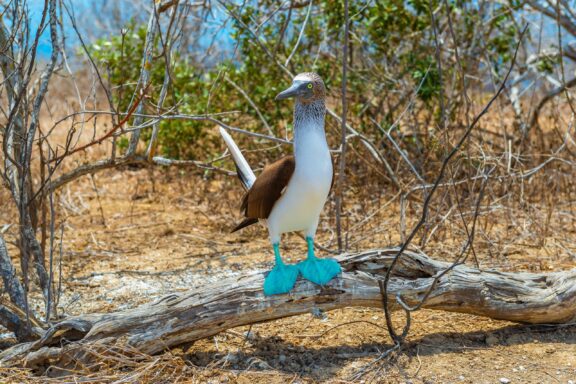
Española Island, also known as Hood Island, is the oldest and southernmost of the Galápagos Islands. The island has been around for around 3.5 million years and is home to a high number of endemic species, such as its own species of lava lizard, mockingbird, and Galápagos tortoise.
There are two visitor sites at Española Island: Gardner Bay, which offers swimming and snorkeling next to a beautiful beach, and Punta Suarez, known for its diverse array of wildlife, including colorful marine iguanas and blue-footed boobies.
Fernandina Island
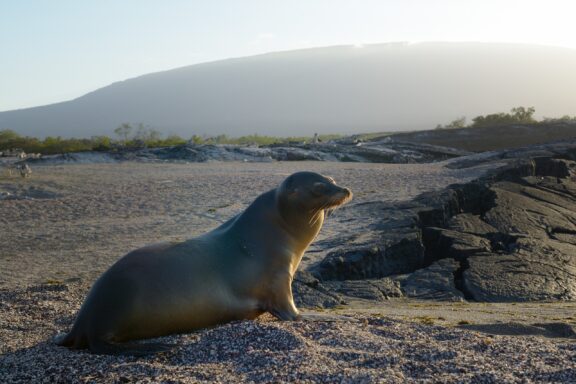
Notably the youngest and westernmost island in the Galápagos archipelago, Fernandina was named after King Ferdinand II of Aragon. Lava fields and a rugged coastline characterize the island’s landscape, which is dominated by the active La Cumbre Volcano.
The vast majority of Galápagos penguins live on this island, as do marine iguanas, flightless cormorants, and sea lions. The waters around Fernandina Island are also thriving with wildlife and make for excellent snorkeling and diving.
Floreana (Charles or Santa María) Island
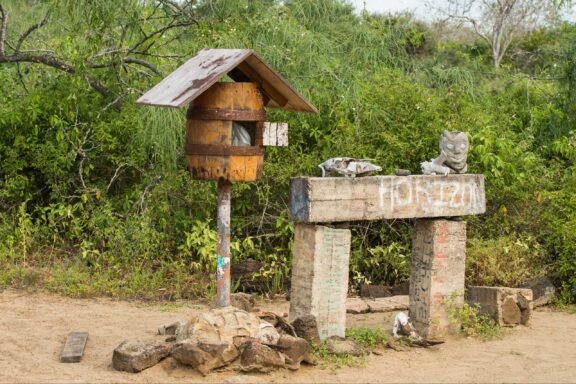
Floreana Island was named in honor of Juan José Flores, the first President of Ecuador; it was during his presidency that the Galápagos Islands became part of Ecuador. This was one of the first islands to be inhabited — it was a popular stop for whalers in the area thanks to its relatively flat surface and supply of fresh water.
Today, the island has a population of about 100 people, and it is frequently visited by tourists. One attraction, Post Office Bay, features a historic barrel that was used as an informal post office system by whalers in the 18th century. Visitors can take part in this tradition today by leaving and delivering postcards.
Genovesa (Tower) Island
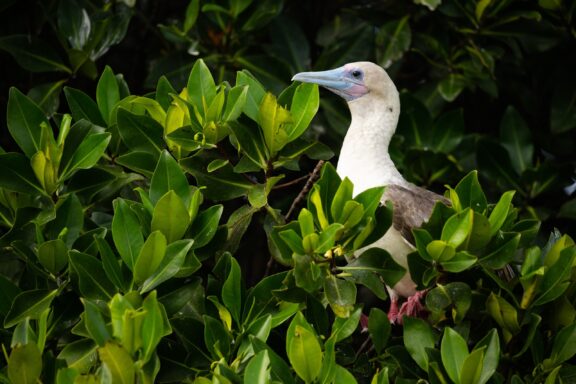
Also known as Tower Island, Genovesa Island is an extinct shield volcano located in the northeastern part of the archipelago. It is a favorite among birdwatchers, as it is home to frigatebirds, red-footed boobies, swallow-tailed gulls, storm petrels, and more.
The landscape on Genovesa Island is also captivating. The island features Lake Arcturus, a saltwater crater lake in the center, and the Great Darwin Bay, formed from the collapse of a volcanic caldera.
The island’s current name is Spanish for Genovese, referring to the birthplace of Christopher Columbus, and was adopted on the quadricentennial of the explorer’s first voyage.
Isabela (Albemarle) Island
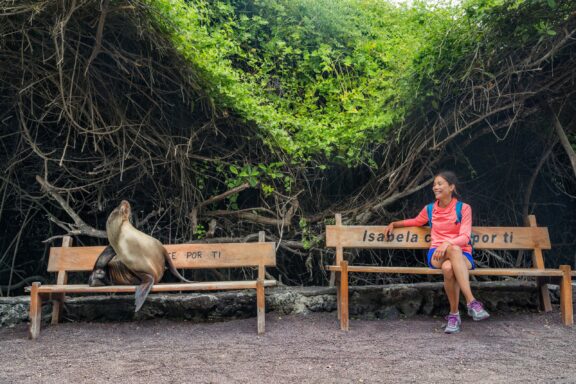
Isabela is the largest island in the Galápagos, consisting of more land than all of the other islands combined. It was formed by the merging of six shield volcanoes, five of which are still active. The island is located on the equator and features an incredible landscape, varied wildlife, and a human population of just under 2000.
A popular base for tourists on the island is the relaxed town of Puerto Villamil, from which there are extensive trails leading to volcanic craters, pristine beaches, and a lagoon that hosts a large flamingo population.
Marchena (Bindloe) Island
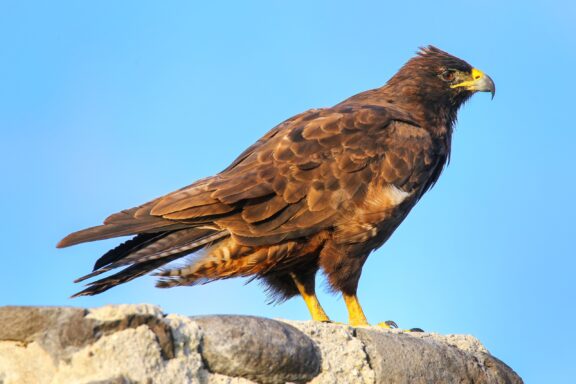
Marchena Island is one of the lesser-known islands to tourists in the Galápagos because visitors are not allowed ashore. Diving is possible in the biodiverse waters around the island, and this is as close as tourists can get. The island was named for Spanish monk Antonio Marchena, who was one of the first visitors to the island.
In addition to its striking volcanic landscape, Marchena Island is home to the Galápagos Hawk and the endemic Marchena lava Lizard.
North Seymour Island
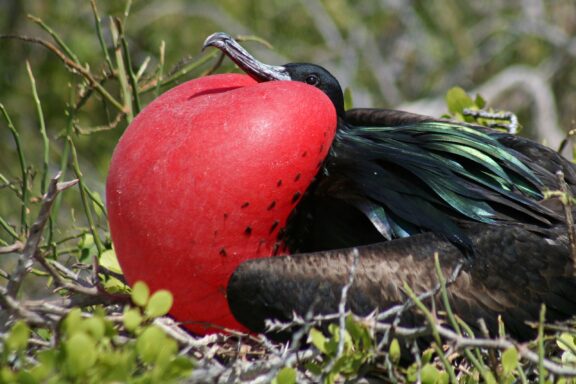
North Seymour is a relatively small island located north of Baltra. The island is teeming with wildlife, which makes it a compelling destination for tourists interested in seeing many of the animals the Galápagos Islands are known for. Among these are frigatebirds, blue-footed boobies, sea lions, marine iguanas, and a growing population of Galápagos land iguanas.
Unlike many of the otherGalápagos Islands, North Seymour was not formed from a volcanic eruption. Instead, it was formed from the geological uplift of a submarine lava formation. This is what gives the island its flat terrain as opposed to the conical shape many of the other islands exhibit.
Pinzón (Duncan) Island
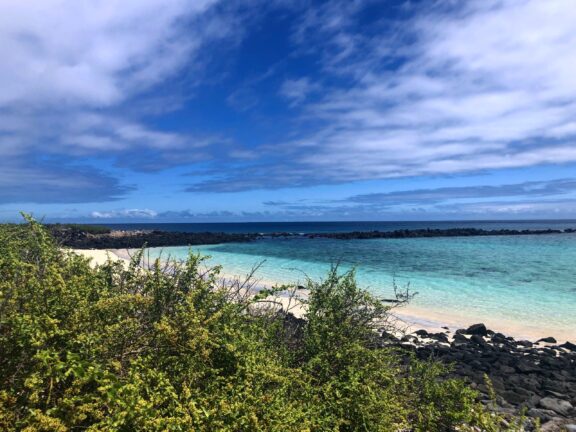
With no permanent population or visitor facilities, Pinzón Island receives very few human visitors. It is located in the geological center of the Galápagos Islands and has remained isolated from the others for a very long time.
The island plays a crucial role in the conservation of the Galápagos tortoise. The island was severely affected by the introduction of rats that preyed on the eggs and hatchlings of tortoises, but a successful rat eradication program in 2012 has allowed for a slow recovery.
Pinta Island
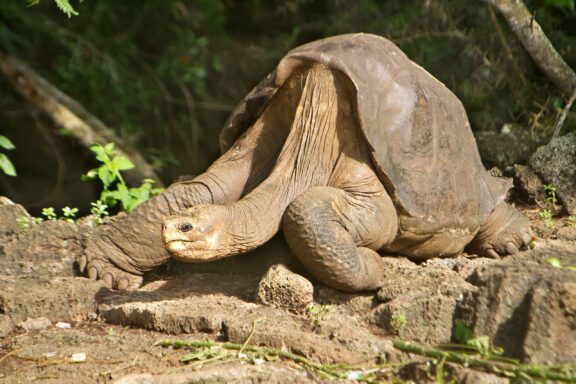
Pinta Island is likely best known for being the home of Lonesome George, the last Pinta Island tortoise before the species became extinct. The introduction of feral goats to the island led to the severe reduction of vegetation that constituted the Pinta Island tortoise diet and eventually the extinction of the species.
Goats have since been eradicated from Pinta Island, and the plant life is slowly returning to its former abundance.
Rábida Island
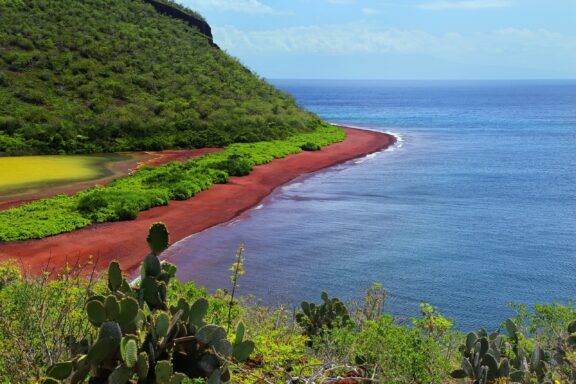
Located near the center of the Galápagos Islands, Rábida is distinctive for its red sand and cliffs, a result of the land’s high iron content. There is only one visitor site on the island, and cruise ships bring the only tourists.
Some of the bird life on Rábida includes nine varieties of Darwin’s finches, Galápagos hawks, brown pelicans, and flamingos. The seas around the island are also full of life and offer snorkelers the chance to see sea lions, sea turtles, and many types of reef fish.
San Cristóbal (Chatham) Island
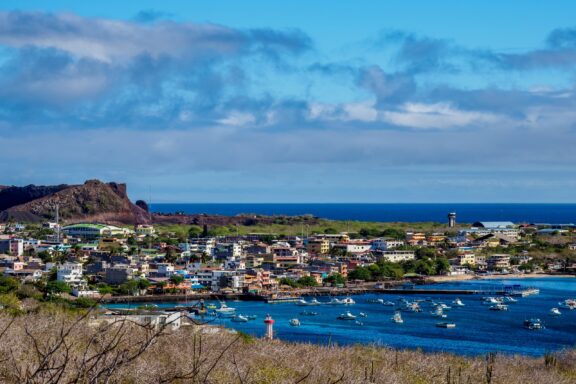
Also known as Chatham Island, San Cristóbal is the easternmost of the Galápagos Islands. It’s also one of the oldest in the archipelago, formed from several fused, extinct volcanoes. The island was home to one of the first human settlements in the archipelago and is where Darwin first went ashore in 1835.
The capital of the island is Puerto Baquerizo Moreno, which is a hub of local culture as well as a center for surfing, diving, and snorkeling. Diving with hammerhead sharks and rays is especially good near Kicker Rock, which is the remains of a lava cone.
Santa Cruz (Indefatigable) Island
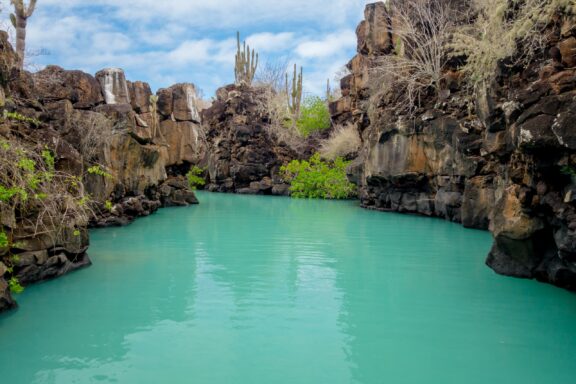
Santa Cruz Island is the second-largest in the Galápagos and the most populous. It’s also notable for hosting the Charles Darwin Research Station, which is a global hub for scientific research and conservation.
The island’s lively town of Puerto Ayora offers a mix of local culture and tourist amenities — many of the most popular Galápagos tours start here. The landscapes of Santa Cruz are varied, including mangroves, lava tubes, highland forests, and more, which support a diverse range of wildlife.
Santa Fe (Barrington) Island
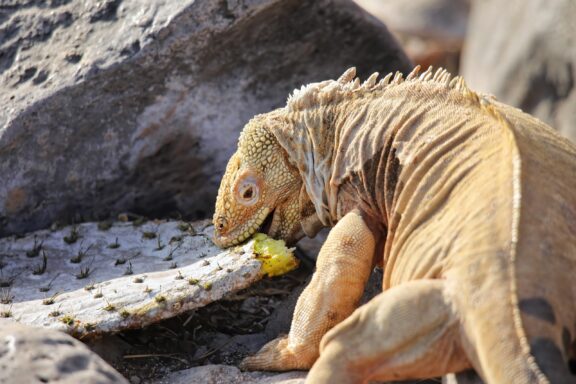
Santa Fe Island is distinct for its unique blend of desert-like scenery and the wildlife that calls it home. An impressive sea lion colony lives here, as does the endemic Barrington land iguana and Barrington leaf-toed gecko, and the island’s turquoise lagoon hosts colorful fish, rays, and sea turtles, making for excellent snorkeling.
The giant Galápagos Prickly Pear cactus and palo santo trees dot the landscape, and volcanic rocks that are up to 4 million years old have been found here.
Santiago Island
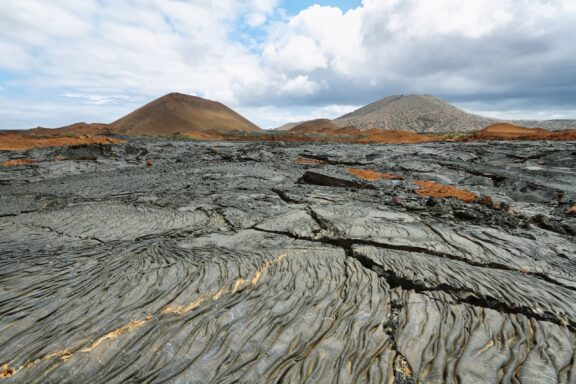
Santiago Island is located near the center of the Galápagos and consists of two overlapping volcanoes. The dramatic landscape features hardened lava flows from past volcanic eruptions, the oldest of which are from 750,000 years ago.
This island is home to many species that are endemic to the Galápagos Islands, and successful conservation efforts have increased the numbers of land iguanas, marine iguanas, and fur seals, among others.
Wolf (Wenman) Island
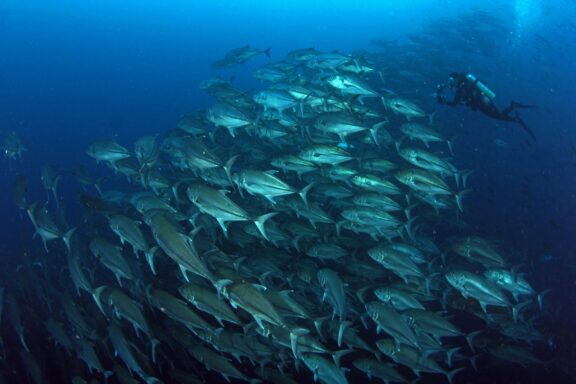
Wolf Island is one of the most remote islands in the Galápagos. Previously called Wenman Island in English, it is now named after German geologist Theodor Wolf and is a world-class diving location. Hammerhead sharks, Galápagos sharks, and occasionally whale sharks can be in the nutrient-rich waters around the island.
The island is also home to birds like the endemic vampire finch, frigatebirds, and red-footed boobies. Although the island is not open to tourist land visits, boat tours offer views of the island and access to the surrounding waters.
Minor Islands of the Galápagos
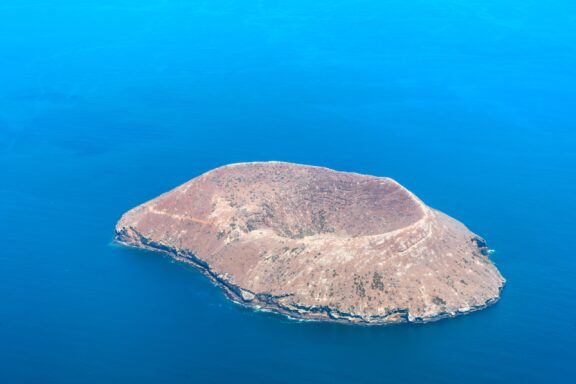
There are also four smaller islands in the Galápagos. These are Daphne Major, South Plaza Island, Nameless Island, and Roca Redonda. They have mostly restricted access for humans.
Image Sources and Copyright Information
- Land Iguana on the Sandy Terrain of Baltra Island, Galapagos: © mauraeduarda/Shutterstock
- Panoramic View of Twin Beaches on Bartolome Island in the Galapagos: © Jess Kraft/Shutterstock
- Giant Whale Shark and Diver in the Deep Blue Sea: © Lindsey Lu/Shutterstock
- Male Blue-footed Booby (Sula nebouxii) on Española Island: © SL-Photography/Shutterstock
- Galapagos Sea Lion Basking in the Sunlight on Fernandina Island: © Kevin Oke Photo/Shutterstock
- Rustic Mailbox at the Post Office Bay on Floreana Island, Galapagos: © Mark Anthony Ray/Shutterstock
- Red-footed Booby Bird in its Natural Habitat: © Joe McDonald/Shutterstock
- Tourist Woman Sitting on a Bench Next to a Sea Lion in the Galapagos Islands: © Maridav/Shutterstock
- Majestic Galapagos Hawk Perched on a Rock Against a Clear Blue Sky: © Don Mammoser/Shutterstock
- Male Great Frigatebird with Inflated Red Gular Sac on North Seymour Island: © Mogens Trolle/Shutterstock
- Serene Beach View with Crystal Clear Waters and Lush Greenery: © Claireqlb/Shutterstock
- Lonesome George, the Last Pinta Island Tortoise, in the Galapagos: © Fotos593/Shutterstock
- Vibrant Coastal Landscape with Red Sand Beach and Lush Greenery: © Don Mammoser/Shutterstock
- Elevated View of Coastal Town with Boats and Clear Blue Sky: © Karol Kozlowski/Shutterstock
- Serene Turquoise Waters of Las Grietas Geological Canyon in Santa Cruz: © Fotos593/Shutterstock
- Barrington Land Iguana (Conolophus pallidus) Feasting on a Cactus: © Don Mammoser/Shutterstock
- Volcanic Terrain with Lava Flows and Conical Hills on Santiago Island, Galapagos, Ecuador: © Marisa Estivill/Shutterstock
- Diver Observing a Large School of Trevally Near Darwin and Wolf Islands, Galapagos, Ecuador: © Mohamed AlQubaisi/Shutterstock
- Aerial View of Daphne Major Island in the Galapagos Archipelago: © Al'fred/Shutterstock